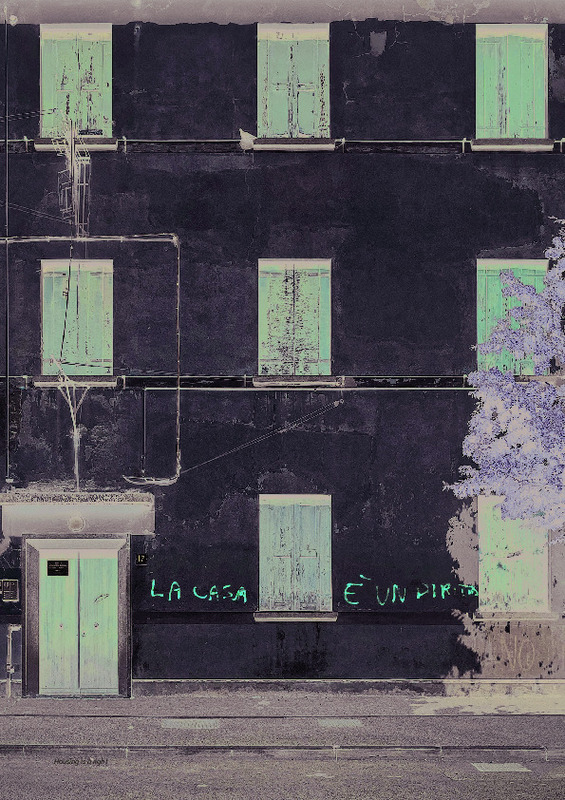Aldebei, F., Dombi, M. (2021) Mining the Built Environment: Telling the Story of Urban Mining. Buildings 11, article ID 388. https://doi.org/10.3390/buildings11090388
Breglia, M. (2012) ‘Il social housing come modello di un welfare europeo’, Urbanpromo 2012. Torino, October 2012.
Caves, R.W. (2004) Encyclopedia of the City. Routledge: London, UK. https://doi.org/10.4324/9780203484234
[+]
Aldebei, F., Dombi, M. (2021) Mining the Built Environment: Telling the Story of Urban Mining. Buildings 11, article ID 388. https://doi.org/10.3390/buildings11090388
Breglia, M. (2012) ‘Il social housing come modello di un welfare europeo’, Urbanpromo 2012. Torino, October 2012.
Caves, R.W. (2004) Encyclopedia of the City. Routledge: London, UK. https://doi.org/10.4324/9780203484234
Cossu, R. and Williams, I.D. (2015) Urban mining: Concepts, terminology, challenges. Waste Management 45, 1-3. https://doi.org/10.1016/j.wasman.2015.09.040
Crawford, K., Johnson, C., Davies, F., Joo, S. and Bell, S. (2014) Demolition or Refurbishment of Social Housing? A review of the evidence [WWW document]. https://www.ucl.ac.uk/engineering- exchange/sites/engineering_exchange/files/report-refurbishment-demolition-social- housing_1.pdf (accessed 24 March 2023)
De Risi, M.T., Di Domenico, M., Manfredi, V., Terrenzi, M., Camata, G., Mollaioli, F., Noto, F., Ricci, P., Franchin, P., Masi, A., Spacone, E. and Verderame, G.M. (2022) Modelling and Seismic Response Analysis of Italian pre-code and low-code Reinforced Concrete Buildings. Part I: Bare
Frames. Journal of Earthquake Engineering. https://doi.org/10.1080/13632469.2022.2074919
Egan, M., Katikireddi, S.V., Kearns, A., Tannahill, C., Kalacs, M., Bond, L. (2013) Health effects of neighborhood demolition and housing improvement: a prospective controlled study of 2 natural experiments in urban renewal. American Journal of Public Health 103:6, 47-53. https://doi.org/10.2105/AJPH.2013.301275
European Commission (2015a) Closing the loop - An EU action plan for the Circular Economy. COM (2015) 614.
European Commission (2015b) Towards an EU Research and Innovation policy agenda for Nature-Based Solutions & Re-Naturing Cities. Luxembourg: Publications Office of the European Union.
European Commission (2020a) A new Circular Economy Action Plan for a cleaner and more competitive Europe.
European Commission (2020b) A Renovation Wave for Europe - greening our buildings, creating jobs, improving lives. COM (2020) 662.
Frantzeskaki, N., McPhearson, T., Collier, M.J., Kendal, D., Bulkeley, H., Dumitru, A., Walsh, C., Noble, K., van Wyk, E., Ordóñez, C., Oke, C., Pintér, L. (2019) Nature-Based Solutions for Urban Climate Change Adaptation: Linking Science, Policy, and Practice Communities for Evidence-Based Decision-Making. BioScience, 69.6, 455–466. https://doi.org/10.1093/biosci/biz042
Ghyoot, M., Devlieger, L., Billet, L. and Warnier, A. (2018) Déconstruction et réemploi. Comment faire circuler les éléments de construction. Switzerland: EPFL Press: Lausanne.
Graham, P. (2005) Design for Adaptability - An Introduction to the Principles and Basic Strategies. Royal Australian Institute of Architects: Melbourne, Australia.
ICLEI (2017) Briefing Sheet - Nature-based solutions for sustainable urban development. ICLEI World Secretariat: Bonn, Germany.
ISTAT (2022) Censimento Popolazione Abitazioni [WWW document]. http://dati- censimentopopolazione.istat.it/Index.aspx (accessed 24 March 2023)
Johansson, N., Krook, J., Eklund, M. and Berglund, B. (2013) An integrated review of concepts and initiatives for mining the technosphere: Towards a new taxonomy. Journal of Cleaner Production 55, 35–44. https://doi.org/10.1016/j.jclepro.2012.04.007
Koutamanisa, A., van Reijnb, B. and van Buerenc, E. (2018) Urban mining and buildings: A review of possibilities and limitations. Resources, Conservation & Recycling 138, 32–39. https://doi.org/10.1016/j.resconrec.2018.06.024
Melton, P. (2020) Design for Adaptability, Deconstruction, and Reuse. The American Institute of Architects: Washington DC, USA.
Ministero delle Infrastrutture e dei Trasporti (2018) Norme Tecniche per le Costruzioni. NTC 2018.
Mussinelli, E., Tartaglia, A., Bisogni, L. and Malcevschi, S. (2018) Il ruolo delle Nature- Based Solutions nel progetto architettonico e urbano. Technè 15, 116-123.
Norberg-Schulz, C. (1979) Genius Loci, towards a phenomenology of architecture. Rizzoli: New York, USA.
Randstad (2021) Le isole delle donne inattive tra i 30 e i 69 anni [WWW document]. https://research.randstad.it/rapporti/le-isole-delle-donne-inattive-tra-i-30-e-i-69-anni.pdf (accessed 7 March 2023).
Reike, D., Vermeulen, W. J. V., & Witjes, S. (2018) The circular economy: New or refurbished as CE 3.0? – exploring controversies in the Conceptualization of the circular economy through a focus on history and resource value retention options. Resources, Conservation and Recycling, 135, 246–264. https://doi.org/10.1016/j.resconrec.2017.08.027
Ruby, I. and Ruby, A. (2010) Mine the City, in: Ruby I. and Ruby A. (eds.) Re-Inventing Construction. Ruby Press: Berlin, Germany.
Sabu, S. (2022) Urban mining: The future of material sourcing [WWW document]. https://www.malbaproject.com/post/urban- mining-the-future-of-material-sourcing (accessed 20 March 2023)
Stollmann, J. (2014) Hands Off: Urban Mining!: A Plea for the Re-evaluation of Substandard Housing. In Building from Waste: Recovered Materials in Architecture and Construction, 27-32. Birkhäuser: Berlin, Boston. https://doi.org/10.1515/9783038213758.27
Vestbro, D.U. (2000) From collective housing to cohousing — a summary of research. Journal of Architectural and Planning Research 17.2, 164-178.
Wild, T., Bulkeley, H., Naumann, S., Vojinovic, Z., Calfapietra, C. and Whiteoak, K. (2020) Nature-Based Solutions. State of the Art in EU- funded Projects. Publication Office of the European Union: Luxembourg.
[-]









